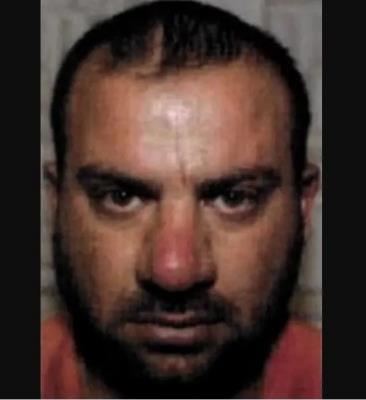(MENAFN- IANS)

By Mrityunjoy Kumar Jha
New Delhi, May 28: The new mysterious supremo of the dreaded Islamic terrorist organisation ISIS has been arrested by the Turkey security forces in an operation. According to Turkish news website OdaTV, the ISIS chief Abu al-Hassan al-Qurayshi was captured in a secret operation by the Turkeys anti-terrorism police and intelligence agents in the suburbs of Istanbul last week. Turkish President Recep Tayyip Erdogan is set to announce al-Hassan al-Qurayshis capture in the coming days. This is the first time that any chief of ISIS is captured alive.
Quoting the sources, the report says that the top terrorist was arrested after a long police surveillance of a house where he was staying. No shots were fired during the raid.
The anti-terror police believes that they have captured the elusive new leader of ISIS, whose photographs have been published so far.
The arrest of al-Hassan al-Qurayshi is another crushing blow to ISIS two years after the violent Sunni Muslim group lost long-time leader Abu Bakr al-Baghdadi in 2019.
According to the report, Abu al-Hassan al-Qurayshi is believed to be Juma al-Badri, the older brother of the first IS leader Abu Bakr al-Baghdadi who blew himself up during a US raid in 2019. Al-Baghdadi was succeeded by Al-Hashimi who also blew himself up during a February raid by US forces in Syria this year. A month later IS announced, 'Abu Hasan al-Hashemi al-Qurayshi as an emir over believers and the caliph of Muslims.'
Like his predecessor, Abu al-Hassan selected a name designed to indicate he is a descendant of the Hashemite clan of the Qurashi tribe, which by bloodline would link him to Prophet Muhammed — an ISIS requirement for any would-be caliph.
Abu al-Hassan al-Qurayshi, became the third emir to lead the terror group since it began calling itself Islamic State.
Unlike his brother Baghdadi, Qurayshi kept a low profile even after becoming the chief in February this year. ISIS did not circulate photographs or provide biographical details about him. And he never released an audio message. But he provided 'near constant operational guidance to ISIS fighters,' according to the Pentagon.
In recent years, Turkey's forces have launched several operations against ISIS along its border with Syria. Experts believe that the group has been decimated since waging a global campaign of terror in the last decade. But it still commands followers and continues to inspire attacks among jihadists.
In March, fighters of ISIS published video on Facebook, which lasted 40 seconds claiming allegiance to ISIS and its new emir, Abu al-Hassan al-Hashemi al-Qurayshi before launching a terrorist attack in Hadera, Israel killing two people.
The Islamic State – also known as ISIS, ISIL, or Daesh – emerged from the remnants of al Qaeda in Iraq (AQI), a local offshoot of al Qaeda founded by Abu Musab al Zarqawi in 2004. It faded into obscurity for several years after the surge of U.S. troops to Iraq in 2007. But it began to re-emerge in 2011. Over the next few years, it took advantage of growing instability in Iraq and Syria to carry out attacks and bolster its ranks.
A US-led coalition began airstrikes against ISIS in Iraq on August 7, 2014, and expanded the campaign to Syria the following month. On October 15, the United States named the campaign 'Operation Inherent Resolve.' Over the next year, the United States conducted more than 8,000 airstrikes in Iraq and Syria. ISIS suffered key losses along Syria's border with Turkey, and by the end of 2015, Iraqi forces had made progress in recapturing Ramadi. But in Syria, ISIS made gains in Aleppo, and still firmly held Raqqa and other strongholds. In 2015, ISIS expanded into a network of affiliates in at least eight other countries including Afghanistan. Its branches, supporters, and affiliates increasingly carried out attacks beyond the borders of its so-called caliphate
According to Indian agencies, the Islamic State has 66 known Indian fighters in their cadre. Some of them are caught and now in various jails of Gulf countries.
(The content is being carried under an arrangement with indianarrative.com)
--indianarrative
MENAFN28052022000231011071ID1104284299
Legal Disclaimer:
MENAFN provides the information “as is” without warranty of any kind. We do not accept any responsibility or liability for the accuracy, content, images, videos, licenses, completeness, legality, or reliability of the information contained in this article. If you have any complaints or copyright issues related to this article, kindly contact the provider above.